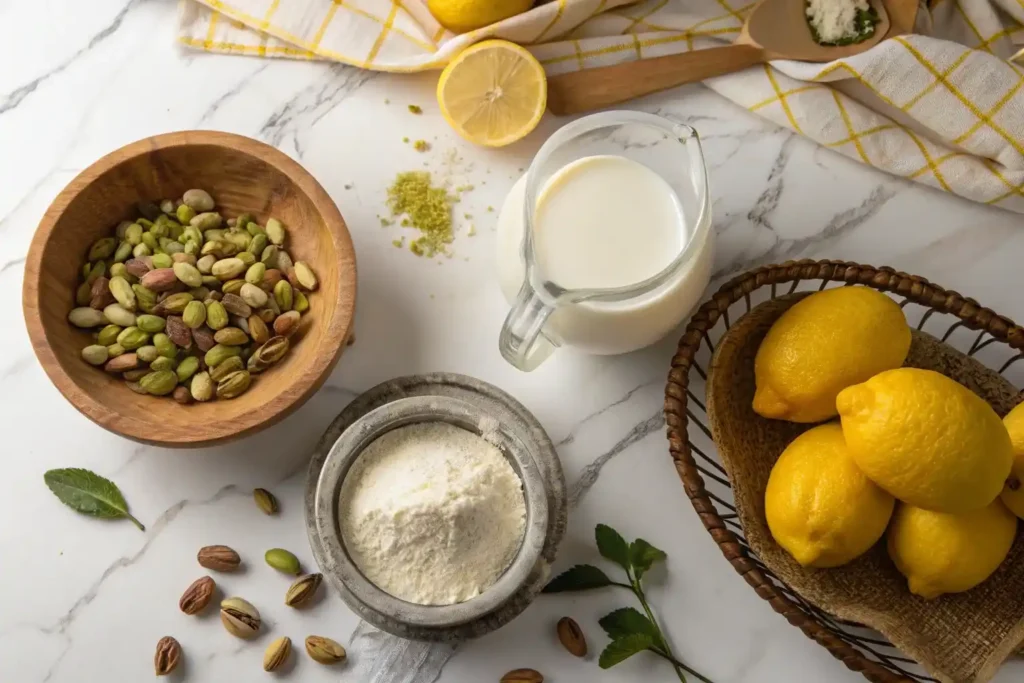Introduction to Gelato
If you’ve ever strolled through the charming streets of Italy on a warm summer day, you may have noticed the locals indulging in a dessert that looks like ice cream but has a richer texture and more intense flavor. This creamy delight is called gelato, the quintessential Italian alternative to ice cream. Unlike traditional ice cream, gelato is made using a slow-churning process that results in a dense and velvety texture, enhancing its rich flavor profile. This slow churning incorporates less air, making each bite of gelato a more indulgent and flavorful experience.
But what exactly is gelato, and why do Italians prefer it over the more familiar frozen treat? The cultural significance of gelato in Italy goes beyond just being a dessert—it’s a social experience. Whether enjoyed while walking through cobblestone streets, as a midday refreshment, or as an after-dinner indulgence, gelato plays an integral role in Italian culinary tradition. Many gelaterias in Italy are family-run businesses that have been perfecting their craft for generations, using only high-quality ingredients and time-honored techniques.
Let’s dive into the world of gelato, exploring its history, unique characteristics, and why it’s loved by so many around the globe. From its humble beginnings in Renaissance Italy to its evolution into a globally adored treat, gelato has a fascinating story that makes it even more special.
Table of contents
What is Gelato?
Gelato is not just the Italian word for ice cream—it’s an entirely different dessert with its own distinct texture, flavor, and tradition. While both gelato and ice cream contain similar base ingredients such as milk, sugar, and flavorings, gelato has a much lower fat content (4-8%) compared to ice cream (14-25%). This lower fat content gives gelato a denser, creamier texture and a more intense flavor experience.
History of Gelato
The origins of gelato can be traced back to ancient Rome and Egypt, where iced desserts were made using snow and ice collected from the mountains. However, gelato as we know it today emerged during the Renaissance in Florence, where the Medici family helped refine its recipes. A man named Bernardo Buontalenti, a talented artist and architect, is credited with creating the first gelato for the Medici court in the late 16th century.
Since then, gelato has become a staple of Italian culture, enjoyed by millions worldwide. Its popularity continues to grow, and gelaterias can now be found in cities all around the world.
Gelato vs. Ice Cream: What Sets Them Apart?
Although gelato and ice cream may look similar, they differ significantly in ingredients, texture, and taste. Understanding these differences can help you appreciate why gelato is considered such a special treat in Italy.
Ingredients Comparison

- Gelato contains more milk and less cream, resulting in a lower fat content.
- Gelato has fewer egg yolks than ice cream, and some recipes omit eggs entirely.
- Traditional gelato uses fewer stabilizers and emulsifiers, unlike ice cream, which relies on additives for longer shelf life.
Texture and Taste
- Gelato is churned at a slower speed, incorporating less air and making it denser and creamier.
- Gelato is served at a warmer temperature, around 10-15°F warmer than ice cream, allowing flavors to be more pronounced.
- Gelato flavors are richer and more intense, as the lower fat content allows ingredients to shine.
Exploring the Variety of Gelato Flavors
One of the joys of gelato is its wide range of flavors, from traditional Italian classics to modern innovations.
Traditional Flavors
- Pistachio – Made from high-quality Sicilian pistachios, offering a rich and nutty flavor.
- Stracciatella – Creamy vanilla gelato with thin, crispy shards of dark chocolate mixed in.
- Limone (Lemon) – A tangy and refreshing citrus flavor, perfect for summer.
Modern Innovations
- Salted caramel – A delicious balance of sweet and salty.
- Lavender honey – Floral and lightly sweet, an elegant twist on classic gelato.
- Basil gelato – A unique, slightly savory gelato experience.
- Spumoni – A colorful combination of cherry, pistachio, and chocolate flavors.
The Art of Making Gelato
Making gelato at home requires special techniques and equipment, but it’s a rewarding experience.
Essential Ingredients
- Whole milk – Provides creaminess without excessive fat.
- Sugar – Helps achieve the right texture and sweetness.
- Fresh ingredients – Fruits, nuts, and chocolate enhance the flavor quality.
Step-by-Step Recipe
- Heat the milk mixture – In a saucepan, mix 2 cups of whole milk, 1 cup of sugar, and a pinch of salt over medium heat until the sugar dissolves.
- Add flavorings – For vanilla gelato, add vanilla extract; for chocolate gelato, mix in ½ cup of cocoa powder.
- Cool the mixture – Let the base cool to room temperature, then refrigerate for at least 4 hours.
- Churn the gelato – Pour into an ice cream maker and churn for 20-30 minutes.
- Freeze and serve – Freeze for 1-2 hours for a firmer texture before serving.
Top Gelaterias in Italy
If you’re visiting Italy, don’t miss these famous gelaterias known for their authentic and high-quality gelato.
- Gelateria Dondoli (San Gimignano) – Award-winning gelato, featuring unique flavors like saffron and pine nuts.
- La Carraia (Florence) – Famous for rich, creamy gelato with a variety of flavors.
- Giolitti (Rome) – One of the oldest gelaterias, offering flavors like tiramisu and hazelnut.
When choosing a gelateria, look for gelato stored in covered containers (not piled high), natural colors, and signs that it is made fresh on-site.
Frequently Asked Questions About Gelato
Yes! With a lower fat content (4-8%), gelato is lighter and lower in calories than traditional ice cream.
Yes, many gelaterias offer vegan gelato made with almond or soy milk. Sorbetto is a dairy-free option made entirely with fruit and sugar.
Unlike ice cream, gelato is best enjoyed fresh, ideally within 3 days of being made.
Why Gelato is the Quintessential Italian Dessert
Gelato is more than just a frozen dessert—it’s a symbol of Italian tradition and craftsmanship. With its rich history, bold flavors, and smooth texture, gelato offers an indulgent experience that’s hard to match. Unlike many store-bought frozen treats, gelato is crafted with care, often using locally sourced ingredients that highlight the best flavors of the region. Whether you’re enjoying a scoop in an Italian piazza or making it at home, gelato brings a taste of Italy to life.
Beyond its irresistible taste, gelato represents a cherished social tradition in Italy. Strolling through the streets with a gelato in hand is a common pastime for locals and visitors alike, reinforcing the idea that gelato is not just food—it’s an experience. With an endless variety of flavors, from classic pistachio to inventive combinations like fig and ricotta, there’s always a new taste adventure waiting.
For those who love experimenting in the kitchen, making gelato at home can be a rewarding process. Trying different ingredients, playing with texture, and perfecting your churn can lead to a deeper appreciation for this artisanal dessert. Plus, gelato’s lower fat content makes it a guilt-free indulgence compared to traditional ice cream.
For more Italian dessert inspirations, check out Milk in Jiffy Cornbread Mix and other delicious recipes on Alexandra Recipes!
